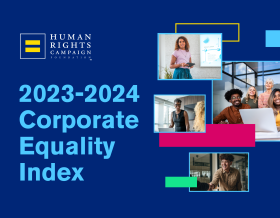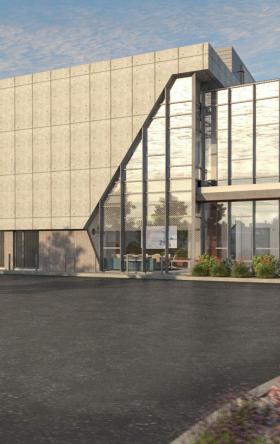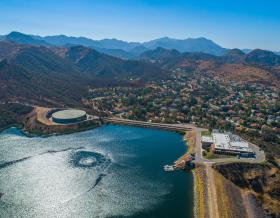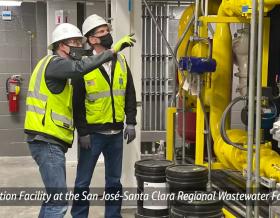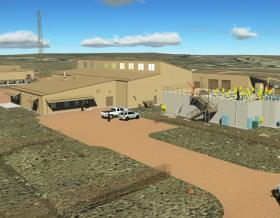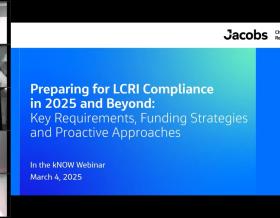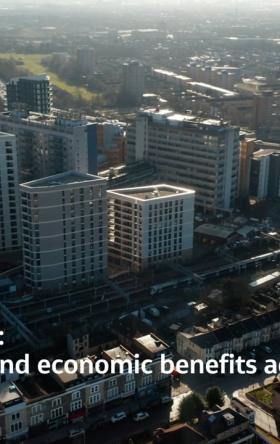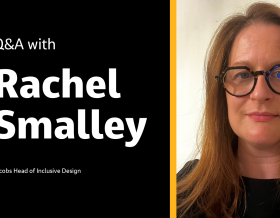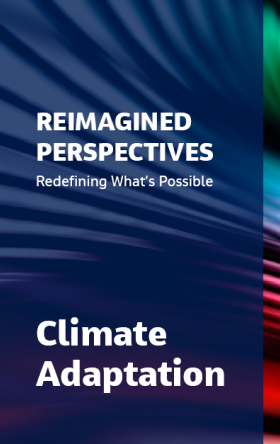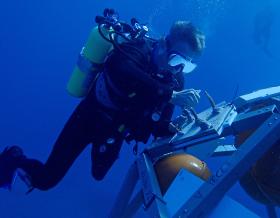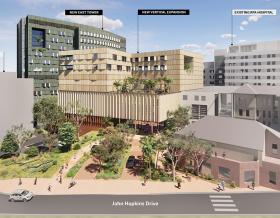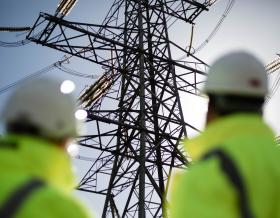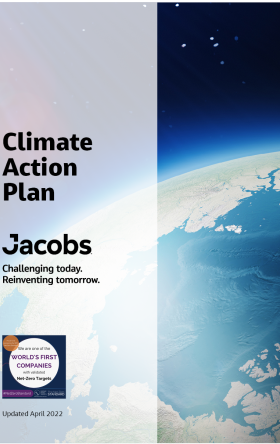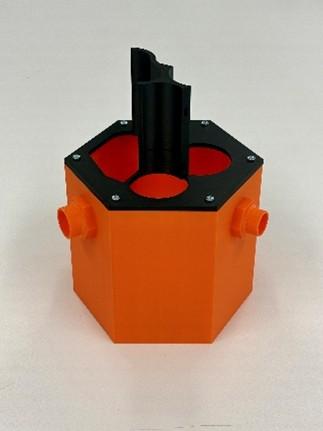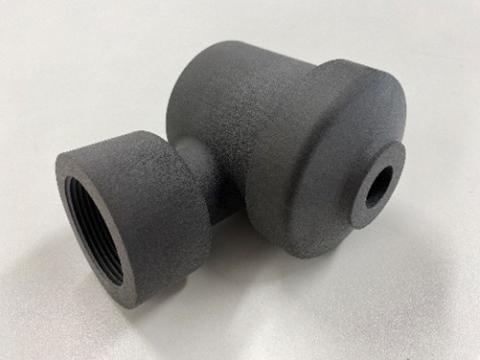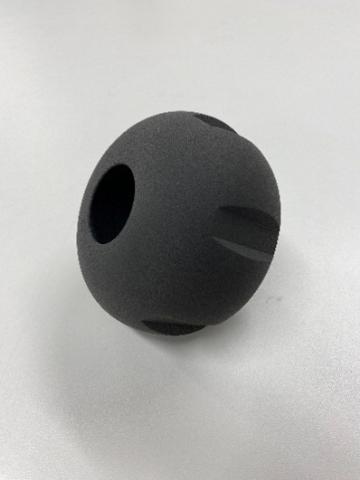Shaping the Future: 3D Printing in the UK Water Industry
Assessing how 3D-printed assets can build a more resilient water sector
-
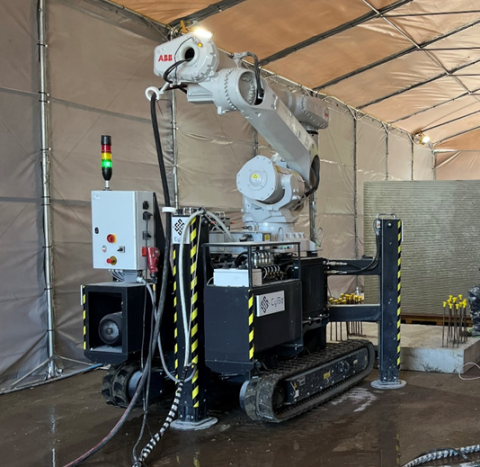
Robot used for 3D printing concrete assets
-
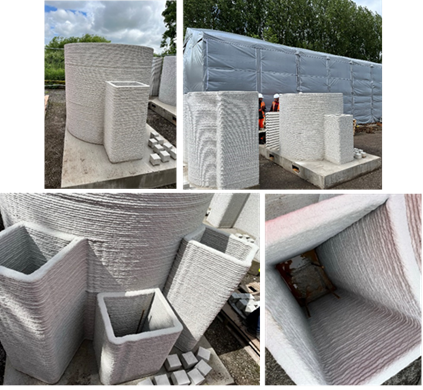
3D printed concrete circular CSO chamber by Changemaker 3D
Jacobs worked with United Utilities and its collaborators—ChangeMaker3D, Manchester Metropolitan University (PrintCity) and Scottish Water—on a £1.5 million ($1.9 million) Ofwat Innovation Fund project. Water Industry Printfrastructure™ (WIP) explored the potential of concrete and polymer 3D printing in the water sector.
The WIP project demonstrated the feasibility of 3D printing infrastructure and operational components as an alternative to sourcing pre-cast or cast-in-place assets. United Utilities selected Jacobs to assess the commercial viability, carbon savings and societal benefits of using 3D-printed products compared with conventional benchmarks.
“The water industry requires unprecedented levels of construction to deliver environmental improvements and maintain aging assets. We must address these challenges sustainably, efficiently and at the lowest cost for our customers. Our WIP project will move 3D printing from a good idea into a valuable tool for our business.”
The challenge
The water industry faces a dual challenge: delivering environmental improvements while maintaining aging infrastructure. With increasing demand, population growth and ambitious climate goals, the sector is under pressure to evolve. Traditional construction and manufacturing methods are also strained by supply chain limitations. Against this backdrop, the industry must act quickly and cost-effectively within its largest-ever investment program.
The solution
3D printing offers the water sector a potentially transformative tool to improve efficiency, reduce carbon and meet regulatory goals. The WIP project evaluated a range of 3D printing technologies for concrete and polymer applications, including:
- Combined sewer overflow (CSO) chambers
- Industrial Emissions Discharge (IED) wall segments
- CCTV camera protective skid plates
- Water quality instrumentation reservoirs
- Jet nozzles for wastewater treatment systems
Jacobs focused on three core areas:
Commercial viability
Jacobs developed a commercialization plan to help transition 3D printing from innovation to real-world application. The plan included a strategic roadmap, legal and regulatory guidance, and a commercial model with funding strategies to support adoption across the sector.
Using pilot trial data, we conducted a cost-benefit analysis showing that 3D-printed concrete and polymer products can reduce costs, enhance service quality, reduce carbon and strengthen resilience across operations.
Whole life carbon assessment (WLCA)
A detailed WLCA was carried out, studying the carbon impacts for the products compared to their benchmarks from cradle to grave. The results indicated carbon savings for all printed polymer products (a water quality instrumentation reservoir, jet nozzle for wastewater treatment and CCTV camera protective skid plate) and two of the concrete products (the Industrial Emissions Directive Printed Wall and circular CSO chamber). Key reasons for carbon savings in the printed compared to benchmark products included less material leading to less embodied carbon, reduced energy in use and maintenance and extended design life.
Social value benefits
The project developed a social value strategy helping identify, deliver and capture wider societal benefits of 3D printed technology. During the pilot, the WIP teams engaged with 150+ young people through careers and skills development events, provided 52 weeks of apprenticeships and created 6 new jobs.
What is more, we helped assess and quantify some of the societal benefits of widespread application of 3D printing technologies in the U.K. water industry. Key potential benefits included job creation and opportunities to upskills and reskill people, improved working conditions through greater flexible working arrangements, and improved health and safety, supply chain resilience and economic, wellbeing and environmental benefits.
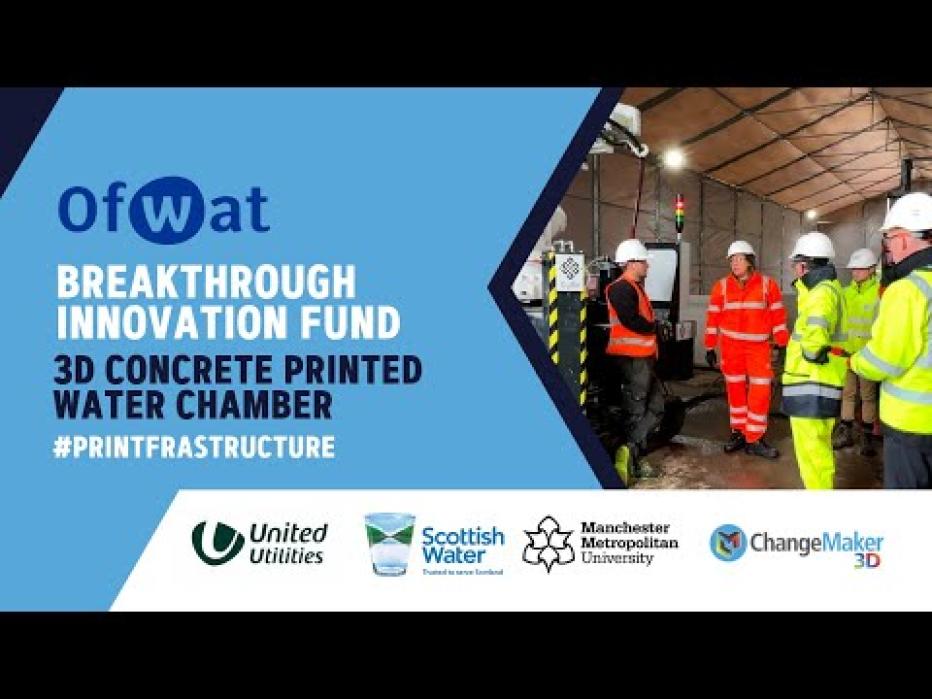
-
50000
tonnes of CO2e benefit to the water sector of the assessed 3D printed assets. Roughly equivalent to planting 50,000 trees, or the annual emissions of 8,000 U.K. households
-
164
young people engaged in careers engagement activities and skills development
-
52
weeks of apprenticeship during the pilot phase- twice as much as targeted
-
6
new relevant jobs created across the WIP Partner organizations during the pilot phase of the project
“This project has been game-changing for our business. We are a self-funded UK start-up with an unwavering belief in our vision to print like our planet depends on it. The time is now. AMP8 won’t wait, our climate crisis won’t wait. Printfrastructure has a vital role to play in creating a water legacy that everyone is proud of, and we are ready to scale, integrate and deliver impact.”
3D printed polymer products (river water quality instrument reservoir, jet nozzle, CCTV protective skid plate at 1:1.25 scale) by Manchester Metropolitan University (Print City)
Key team members
-

Rebecca Haylock, Project Manager (PM)
Rebecca led Jacobs’ scope of work which fed into the project. She was responsible for the full project lifecycle management of the Jacobs-led deliverables.
-

Ariane Brotto, Project Reviewer and Assistant PM
Ariane was responsible for quality assurance of Jacobs-led deliverables and shared the project lifecycle management responsibilities with Rebecca.
-

David Sizer, Carbon Lead
David led the WLCA for the printed products versus their respective benchmarks. The work identified a range of benefits for 3D printed products which varied product-to-product.
-

Ken Lam, Commercialization Lead
Ken led the development of the commercialization plan, complete with a compelling benefit-cost assessment that showcased the value proposition of the 3D printing technologies.
-

Sarah Rial, Social Value Lead
Sarah led the development of the Social Value Strategy, which included the introduction of a measurement framework, targets and a Performance Report.

